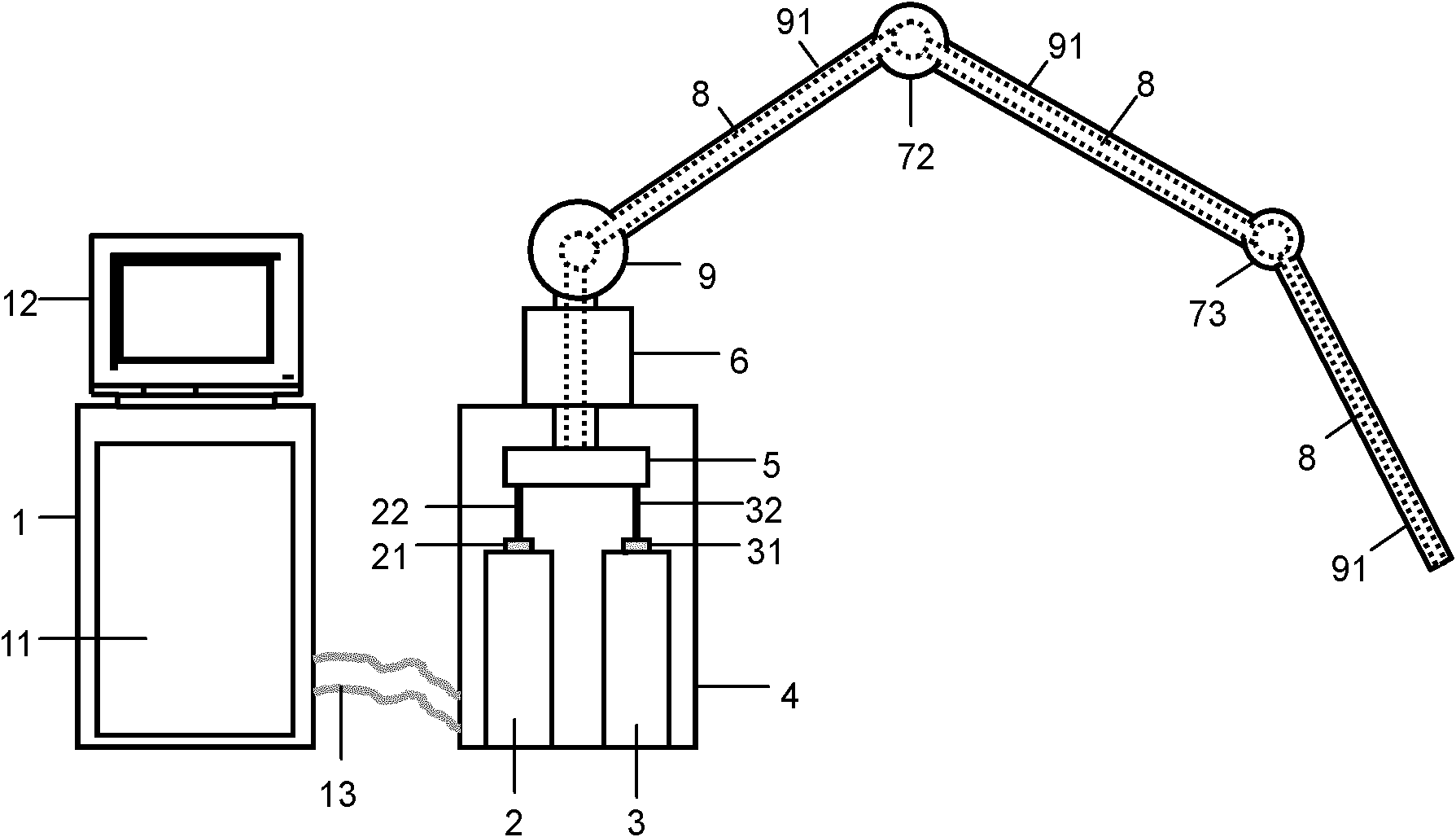Operation robot system for performing laser resection and freezing on tumor tissues
A surgical robot and tumor tissue technology, applied in the field of medical surgical instruments, can solve the problems of difficult fixation of surgical instruments, freezing injury of surrounding normal tissues, failure to develop, etc., to eliminate the risk of infection and bleeding, prevent tumor cells from spreading, and be safe. The effect of eliminating tumor tissue
- Summary
- Abstract
- Description
- Claims
- Application Information
AI Technical Summary
Problems solved by technology
Method used
Image
Examples
Embodiment 1
[0043] figure 1 It is a system diagram of a surgical robot device using laser to remove frozen tumor tissue according to the present invention, and it is also an embodiment of the present invention. In this solution, the mechanical arm 91 contains a cryogenic transmission tube 24 and a laser optical fiber 32 at the same time, so it can pass through The single end of the robotic arm achieves the purpose of freezing the target tissue first and then resecting it; figure 2 It is a schematic diagram of the fusion mechanism 5 of cryogenic fluid and laser fiber in the surgical robot system of the present invention; image 3 It is a schematic cross-sectional view of the cryo-laser ablation surgery robotic arm 91 of the present invention. As can be seen from the figure, the surgical robot system for laser excision of frozen tumor tissue provided by the present invention includes a computer system 1; a computer host 11; a computer screen 12; a data transmission line 13; a cryogenic sy...
Embodiment 2
[0057] The difference between this embodiment and Embodiment 1 is that the surgical robot arm 8 is an element that only performs a single freezing or cutting function. Figure 4 A schematic diagram of a surgical robot arm 8 for resecting frozen tumor tissue separately provided by the laser ablation optical fiber and the freezing probe of the present invention; Figure 5 It is a schematic cross-sectional view of the single cryosurgery robotic arm 8 of the present invention; Image 6 It is a cross-sectional schematic diagram of the single laser ablation operation robot arm 8 of the present invention. In this embodiment, the surgical robot host 4 can be provided with 2-30 surgical robotic arms 8 ( Figure 4 2 surgical manipulators are marked in ), and each surgical manipulator 8 only performs a single freezing or resection function. At this time, multiple surgical manipulators can be combined to complete the corresponding cryotomy function. For example, two low-temperature tran...
PUM
 Login to View More
Login to View More Abstract
Description
Claims
Application Information
 Login to View More
Login to View More - R&D
- Intellectual Property
- Life Sciences
- Materials
- Tech Scout
- Unparalleled Data Quality
- Higher Quality Content
- 60% Fewer Hallucinations
Browse by: Latest US Patents, China's latest patents, Technical Efficacy Thesaurus, Application Domain, Technology Topic, Popular Technical Reports.
© 2025 PatSnap. All rights reserved.Legal|Privacy policy|Modern Slavery Act Transparency Statement|Sitemap|About US| Contact US: help@patsnap.com



